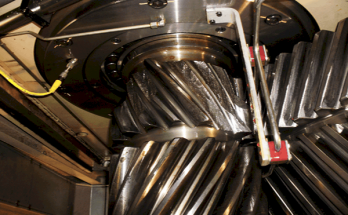Cyberattacks have changed a lot since the days of simple viruses and phishing attempts. Organisations now have to deal with much more advanced attacks like APTs, zero-day exploits multi-vector ransomware, etc. These attacks can bring operations to a halt in just a few hours.
The issue? A lot of security teams don’t have the money, knowledge, or time to find and deal with these threats right away. That’s where MDR services come in.
You might wonder, “What is MDR? How can it help my company specifically?”
A Managed Detection and Response (MDR) service uses both advanced automation and expert human analysis to keep an eye on businesses all the time. It finds problems quickly and responds immediately. In short, it’s the modern answer to a world of cybersecurity that is getting more and more challenging. Read on to find out more about what MDR is and how it can help you.
What is MDR?
It’s important to clearly understand what is MDR and how it works in modern cybersecurity.
Managed Detection and Response (MDR) is a complete cybersecurity service that uses technology, intelligence, and human expertise to find and respond to threats in real time. MDR is different from other monitoring tools because it doesn’t just find threats. It also takes action to stop them.
MDR providers use advanced tools to keep an eye on an organisation’s environment all the time. They also have a group of security analysts who are always available and make sure that problems are fixed right away.
In short, MDR changes cybersecurity from something that reacts to threats to something that plans ahead and uses intelligence to stop attacks from happening in the first place.
What Makes MDR Different From Other Security Services?
To fully understand what is MDR and why it’s different, it helps to compare it with traditional security services. Regular security services depend a lot on the tools that stop problems before they happen. These tools might be firewalls, antivirus software, etc. MDR services, on the other hand, focus on finding threats, analysing them, and responding to them quickly. This is a big change from perimeter protection to active threat management.
1. Scope of Protection
Traditional Services: Mostly use static tools like antivirus and firewalls to stop attacks before they happen.
MDR Service: Uses AI and human analysis to find and actively stop attacks in real time, going beyond just stopping them.
2. Analytics and Threat Intelligence
Traditional Services: Work based on rules and signatures that are already in place, so new or unknown attacks often go unnoticed.
MDR Service: Looks for strange behaviour and threats that weren’t seen before by using tools like behavioural analytics, machine learning threat intelligence feeds, etc.
3. Human Expertise
Traditional Services: Don’t always have dedicated experts keeping an eye on things all the time.
MDR Service: Has a Security Operations Centre (SOC) that is open throughout the day and is staffed by experts who look at alerts and respond right away.
4. Response Capabilities
Traditional Services: Find and record threats, but don’t often respond.
MDR Service: Automates actions like blocking harmful IPs, isolating compromised endpoints, and getting rid of threats instantly.
5. Visibility Across the Environment
Traditional Services: Only able to monitor endpoints or networks.
MDR Service: Gives you full visibility of all endpoints, cloud environments, networks, apps, etc.
What are the Benefits of MDR Compared to Having Your Own Security Team?

Let’s look at a few reasons why MDR might be a better fit for you than having your own security team:
1. Saving Money
It can cost millions of dollars a year to build a full-scale SOC in-house, including the cost of infrastructure, licences and staff.
An MDR service gives you enterprise-level features for a small fraction of the cost, and it can grow without having to spend money on new equipment.
2. 24/7 Expert Coverage
MDR providers work around the clock, so they can keep an eye on things even on weekends, holidays, and after hours.
In-house teams often have trouble keeping things running 24/7 because they don’t have enough staff.
3. Access to Specialized Expertise
MDR services bring together skilled analysts and incident responders who know well about how attacks work and what they do.
Hiring and keeping this kind of talent in-house is hard and expensive, especially since there is a global shortage of cybersecurity professionals right now.
4. Responding to Incidents More Quickly
MDR platforms can respond to incidents in seconds thanks to automation and SOAR (Security Orchestration, Automation, and Response) tools.
In-house teams usually take longer because of manual processes and they can’t sort through alerts as quickly.
5. Regular Updates on Threat Intelligence
MDR providers stay up to date with the latest global threat intelligence feeds so they can be ready for new kinds of attacks.
In-house teams might not be able to keep up with collecting or analysing threat data because they don’t have enough resources.
6. Scalability & Flexibility
MDR services can easily grow with businesses and adopt new technologies. They can cover new devices, users, and cloud assets without having to make major changes to the configuration.
On the other hand, expanding an internal SOC requires more tools, people and most importantly, money.
Next Steps
If you have been thinking about making your company’s security stronger and want to switch from reactive to proactive security, MDR services are a great place to start.
Before you choose a provider, think about these things:
- See to it that they use AI, automation and human expertise that has been proven to work.
- They provide 24/7 monitoring and quick response to incidents.
- They provide clear reporting and the ability to work with the tools you already have.
- They have the ability to hunt threats and gather intelligence before they happen.
You can look at top cybersecurity companies like CyberNX if you want to improve your detection and response strategy. Their MDR services can help businesses stay strong against fast-evolving cyber threats.
Conclusion
Cyber threats today need more than just perimeter defence. They need constant monitoring, smart detection and quick response. An MDR service does exactly that.
MDR uses the combination of AI and human expertise to find threats and stop them from getting worse. Adopting MDR into your company can greatly strengthen your security and provide peace of mind in an unpredictable digital world.



